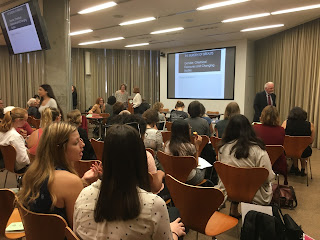EXTRA CREDIT Event 5: delete me

I attended delete me , a Design Media Arts exhibition. This gallery illustrates the idea of deletion, a reclaiming of space for new beginnings. There were many amazing pieces in this exhibition. Out of the numerous art pieces, I chose to interview Lander about his piece Knicker Twister . Knicker Twister by Lander The name behind the piece refers to the saying “to get your knickers in a twist”, meaning something turned dramatic when it shouldn’t (Lander). In other words, a situation swirls into a tornado, like a twister. The sculpture is surrounded by small objects, such as stuffed animals and boxes. Small objects on the piece symbolize small issues in life. The dolls are a source of comfort to help people solve their issues and get help. The boxes refer to life’s mysteries, since we never know what life will throw at us. Lander’s sculpture also incorporates the flow of water. Knicker Twister symbolizes the circulation of life. Water constantly flows throughout the struct...





